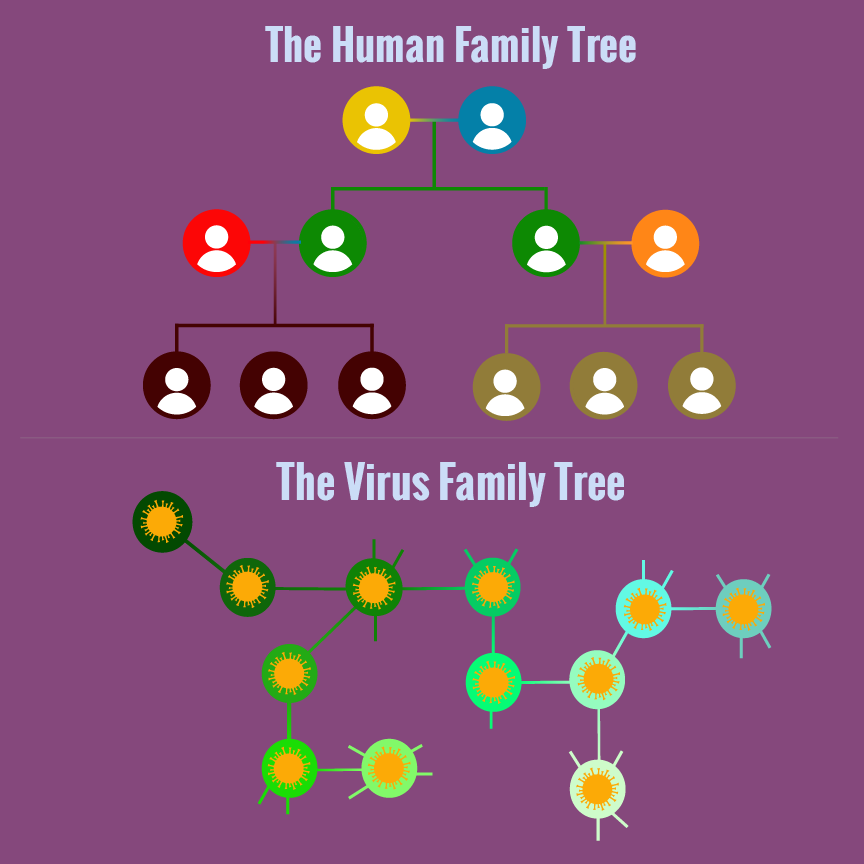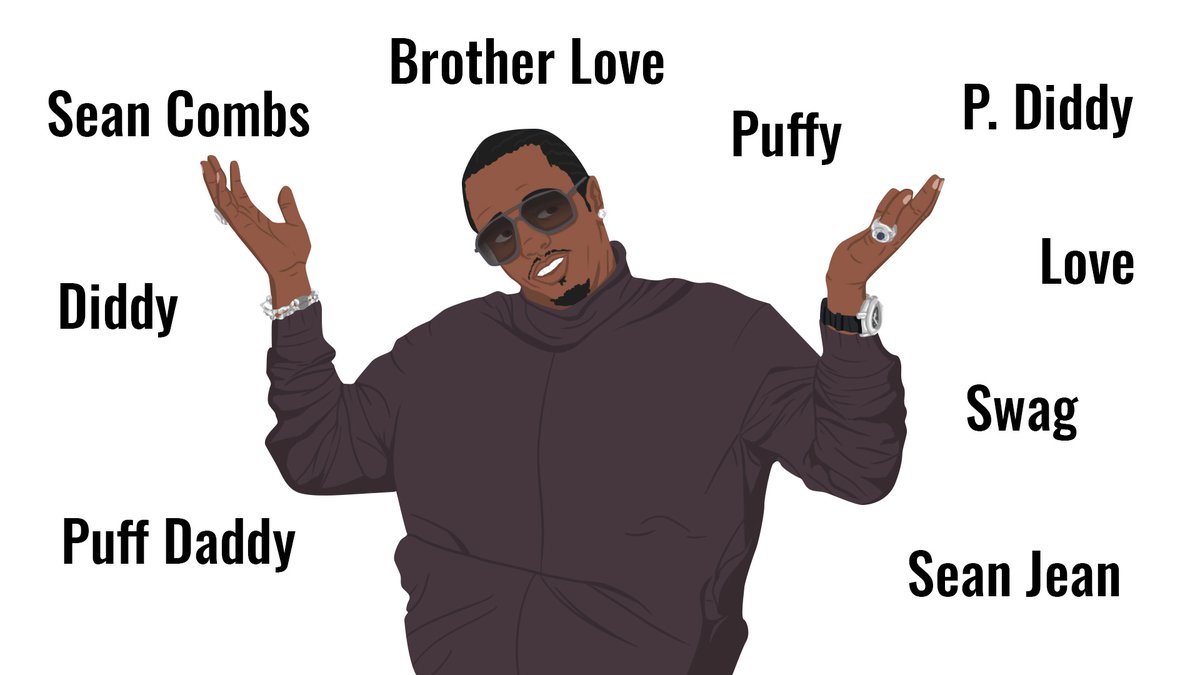This is getting confusing. We started with SARS-CoV-2, and then the virus mutated to give us variants. Some had numbers. Some were dubbed Alpha, Beta, etc. So what’s with this naming convention? And how related, really, are all these numbered and named viruses?
Before we go on, it might be good to go back and read our blog about virus mutations to learn a little bit more about why viruses mutate and why some mutations matter more than others.
If you’ve got a grasp on virus mutations, let’s first start with how related virus mutations are to each other. It’s all about lineage.

When we’re talking about lineage as it relates to humans, think about family trees. The traditional visual of a tree with a lot of branches works well to define the lineage of one person, but it doesn’t give the full story of all your relatives, because each one of those people has their own family tree that’s connected, a whole forest of trees whose branches mingle in your ancestry. This adds considerable diversity from one generation to the next, because each generation of humans incorporates genetic contributions from two parents.That’s why even though you share a set of great grandparents, legally you’re distantly related enough to marry your second cousin.
When we’re talking about lineage as it relates to viruses, things are more closely related. Viruses don’t reproduce sexually, so each generation is marked by a mutation. There are only a few genes different in each generation, so, unlike humans, it would take more generations before you are really different enough to call yourself a different family. Their family tree looks like a single branch that branches into more single branches. So each generation is genetically much closer related than you are to Aunt Sue.
Now let’s tackle naming.
For humans, our names change generationally (or more) with deliberate changes that get incorporated over time, on moves to different parts of the world (dropping or adding parts of a name), or based on marriages and family lines. When we trace our ancestry, we often find that our family name was quite different a dozen or so generations ago.
It’s relatively easy to keep tabs on the names of each generation because new generations don’t get added to our family tree that often. But if you think of virus mutations as babies, what if every family had hundreds of babies every day? You just can’t give each one a cool name. Eventually you might just start numbering them.
Scientists tracking the coronavirus are naming new mutants they find based on which genes are different. They use a numbering system that comes from databases (GISAID, Nextstrain, Pango) global health agencies are using to track what’s happening (which virus strains are having how many babies in which countries).
But that numbering system isn’t easy for us to say in everyday language. When a variant is going to be a big deal and get talked about a lot, we need an easy way for us to refer to it. If we don’t, people will come up with their own nicknames, which can cause confusion and potentially harm. So the World Health Organization came up with a new nicknaming system using letters of the Greek alphabet–enter Alpha, Beta, Gamma, Delta and Omicron–to help us get on the same page and be able to communicate better to fight the disease.

When does a variant get a new number or name? SARS-CoV-2 will go through many thousands of evolutionary changes by the end of the pandemic, so each change can’t possibly be given a new number or name or it would end up with more names than Sean Combs. Or Puff Daddy. Or Puffy.
Classification largely focuses on mutations that contribute to the spread of the virus. That said, this is the first time in history we’ve had such advanced technology to track the genetics and effects of a worldwide pandemic and make these decisions in real time. The naming conventions are being figured out constantly and aren’t set in stone. After all, naming conventions aren’t perfect. Think about the bearcat (neither bear nor cat), electric eel (not an eel), red panda (not even close) or any number of other species we’ve named based on one set of facts and then gotten more info!
Tired of learning all these new names? Not thrilled to meet a new member of the SARS-CoV-2 family? We can help slow down the creation of new families of the virus by reducing the spread through infection prevention measures.
Now back to all of Sean Combs’s names. There’s also P. Diddy, Diddy, Love …


